TLDR Australian fur seals' fur shows high levels of pollutants, which may be linked to hair loss in young female seals.
The study investigated the utility of fur as a biomarker for persistent organic pollutants (POPs) in Australian fur seals, particularly focusing on a population at Lady Julia Percy Island. The research aimed to validate a methodology for determining concentrations of various POPs in fur and to assess the relationship between POPs in fur and blubber. The study found that fur samples from both alopecic (n=43) and control (n=43) seals contained detectable levels of POPs, with significantly higher concentrations of dioxin-like PCBs (dl-PCBs) in alopecic seals. This suggested that fur could be a viable non-invasive matrix for monitoring POPs exposure in pinnipeds, highlighting the widespread presence of these toxicants in the marine ecosystem and their potential role in endocrine disruption leading to alopecia.
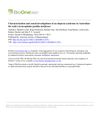 16 citations
,
April 2012 in “Journal of mammalogy”
16 citations
,
April 2012 in “Journal of mammalogy” Young female Australian fur seals are losing hair due to low tyrosine and zinc levels and high pollution exposure.
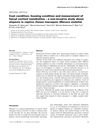 51 citations
,
November 2005 in “Journal of Medical Primatology”
51 citations
,
November 2005 in “Journal of Medical Primatology” Alopecia in captive rhesus macaques is affected by season, sex, age, housing, and stress, with complex links between stress hormones and hair loss.
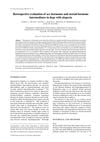 34 citations
,
March 2003 in “Veterinary Dermatology”
34 citations
,
March 2003 in “Veterinary Dermatology” Most dogs with alopecia had higher than normal levels of certain hormones, but hair loss might not always be linked to these hormone changes.
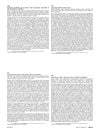 May 2015 in “Journal of the American Academy of Dermatology”
May 2015 in “Journal of the American Academy of Dermatology” Certain drugs and supplements may contribute to hair loss in the frontal hairline in older women.
 January 2011 in “Journal of biological research”
January 2011 in “Journal of biological research” Endocrine disruptors may cause early hair loss.
 16 citations
,
April 2012 in “Journal of mammalogy”
16 citations
,
April 2012 in “Journal of mammalogy” Young female Australian fur seals are losing hair due to low tyrosine and zinc levels and high pollution exposure.
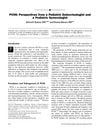 5 citations
,
April 2013 in “Current Problems in Pediatric and Adolescent Health Care”
5 citations
,
April 2013 in “Current Problems in Pediatric and Adolescent Health Care” The document concludes that early and personalized treatment for PCOS in adolescents is crucial to manage symptoms and prevent long-term health issues.
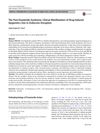 8 citations
,
July 2018 in “Current Sexual Health Reports”
8 citations
,
July 2018 in “Current Sexual Health Reports” Finasteride can cause lasting sexual dysfunction, depression, and other side effects, needing more research for treatment.






